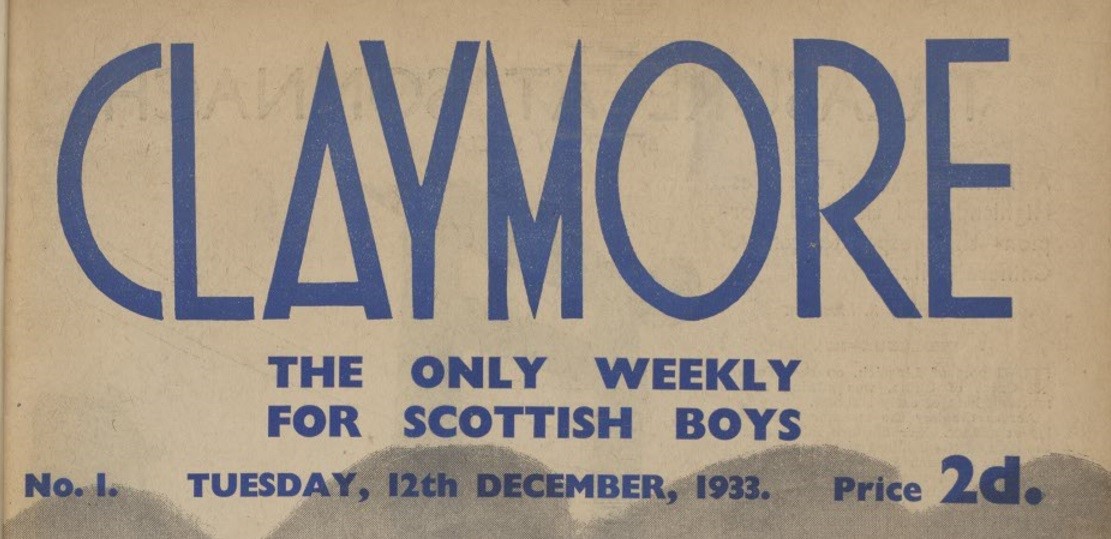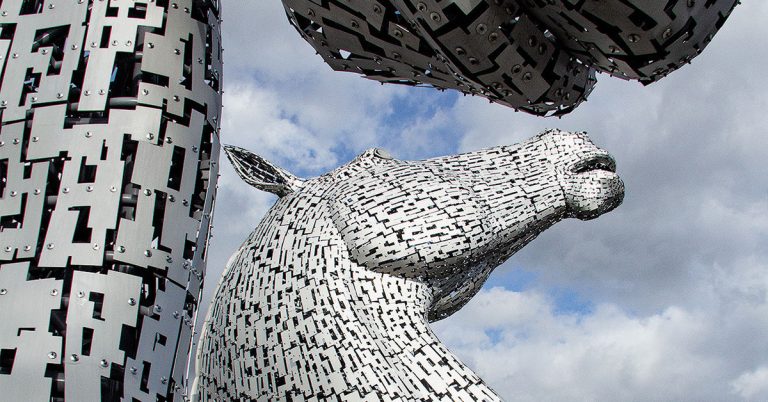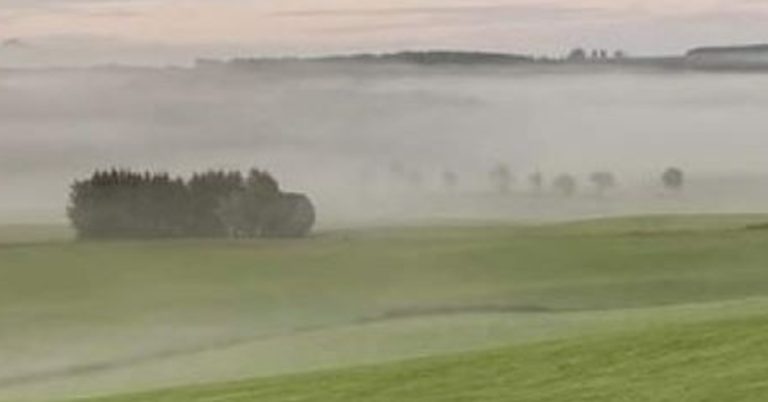
By Duncan Sim
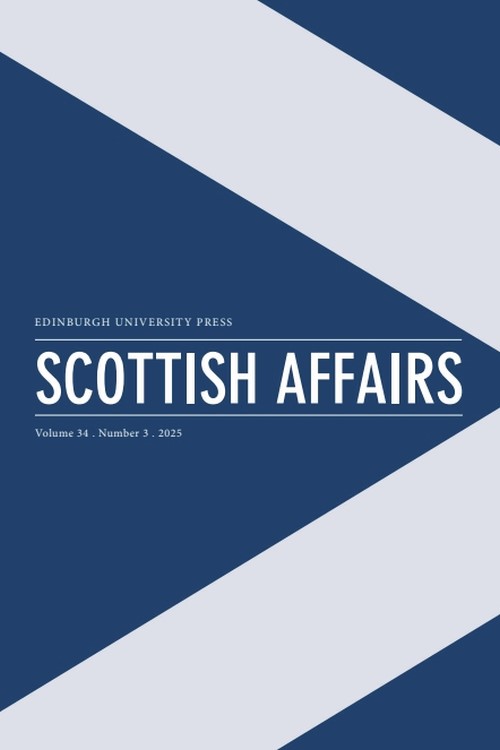
Duncan Sim is the author of the article ‘Strengthening a Scottish Identity: The Claymore Boys’ Magazine, 1933–34‘ in Scottish Affairs.
Scottish identity has, over the years, proved remarkably resilient. Despite Scotland being a part of the UK for over three hundred years, the most recent Census in 2022 tells us that 65.5% of the population chose ‘Scottish’ as their sole national identity.
But this was not always the case and, in the nineteenth and early twentieth centuries, a sense of ‘Britishness’ was much more keenly felt. Indeed, for many years, the term ‘North Britain’ (sometimes shortened to ‘NB’) was often used to describe Scotland. For some individuals, like the early sociologist and urban planner Patrick Geddes, Scotland was being Anglicised and he applauded those who reacted against this process, particularly in the years following the First World War, referring to this as ‘the Scottish Renaissance’.
This reaction was led in part by a range of Scottish writers, including the poet Hugh MacDiarmid, and novelists Lewis Grassic Gibbon, Neil Gunn and Compton Mackenzie. Many of them were supporters of Scottish Home Rule and involved themselves in nationalist politics. Both Gunn and MacDiarmid were founder members of the National Party of Scotland in 1928 and this organisation, following a series of mergers, emerged as the Scottish National Party (SNP) in 1934.
This was also a period when, following the introduction of paid holidays for working class families, many Scots began to explore and develop a pride in the beauties of their own countryside. The National Trust for Scotland and the Scottish Youth Hostels Association were both founded in 1931. There was also the national Scout movement at this time and it was at the annual Scout camp at Auchengillan in the Campsie Fells that Glaswegians Alastair Dunnett and Seumas Adam first met.
Dunnett and Adam sought initially to make their local Scout troops more Scottish by encouraging their fellow Scouts to buy kilts in their clan tartans. They also encouraged the wearing of Balmoral bonnets at church parades, but this proved a step too far for Robert Baden-Powell, founder of The Boy Scouts Association, who promptly banned it.
Between them, Dunnett and Adam hatched a plan for a magazine aimed at young Scots boys, with an emphasis on adventure and the outdoors. There were other boys’ magazines at this time, such as The Gem and The Magnet, but their stories always centred around English public schools, featuring characters like Billy Bunter. Dunnett and Adam’s magazine would be defiantly Scottish and so, in December 1933, the Claymore was born. As they stated in their first editorial:
To see a man carrying a claymore was to know that here was someone who could stand on his own two feet and who could look after himself very well. That’s what the Claymore stands for.
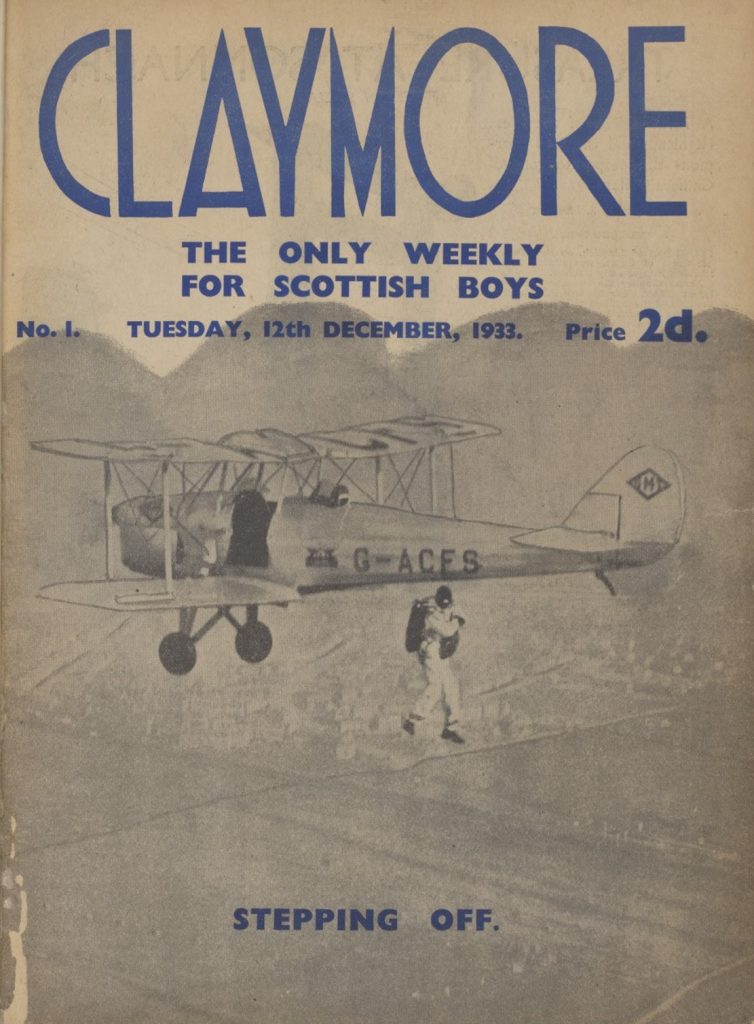
As well as its focus on the outdoors, the magazine carried a large number of stories, plus educational features, news items, jokes and so on. There were few illustrations beyond pen-and-ink drawings as these would probably have been too expensive but drawings usually depicted kilted youths, who invariably spoke in a Scots dialect. Yet, for all that the magazine was aimed at strengthening a sense of Scottishness within young Scots boys, there was virtually no political content in the publication and no reference to the political changes (such as the founding of the SNP) taking place at that time. Innovative though the magazine was, the income from its sales clearly proved insufficient to keep it going and, after 31 issues, the publication folded in July 1934.
Both Dunnett and Adam retained their interest in Scottishness and adventure. They reported on a canoe trip around the Western Isles, intended to demonstrate the economic potential of a hitherto neglected area. And later, when both men had entered full-time journalism, Dunnett in particular argued strongly for Scottish devolution, using his position as editor of The Scotsman.
The role of individuals like Dunnett and Adam, and indeed the role of magazines like the Claymore, in the strengthening of Scottish identity in the interwar years, have not always been adequately acknowledged. They deserve more than a mere footnote in the story, and hence their story is told here.
Read the full article, ‘Strengthening a Scottish Identity: The Claymore Boys’ Magazine, 1933–34′ in Scottish Affairs
About the Author
Dr Duncan Sim is Honorary Senior Research Fellow (and former Reader in Sociology) at the University of the West of Scotland and has written extensively on issues of Scottish identity, particularly within the diaspora. His father was a teenage founder member of the National Party of Scotland in 1928. After his death, his papers were found to contain a rather battered copy of the Claymore.

Image credits
- Available for re-use under a Creative Commons Attribution (CC-BY) 4.0 International Licence. We are grateful to the National Library of Scotland for providing this image. ↩︎


